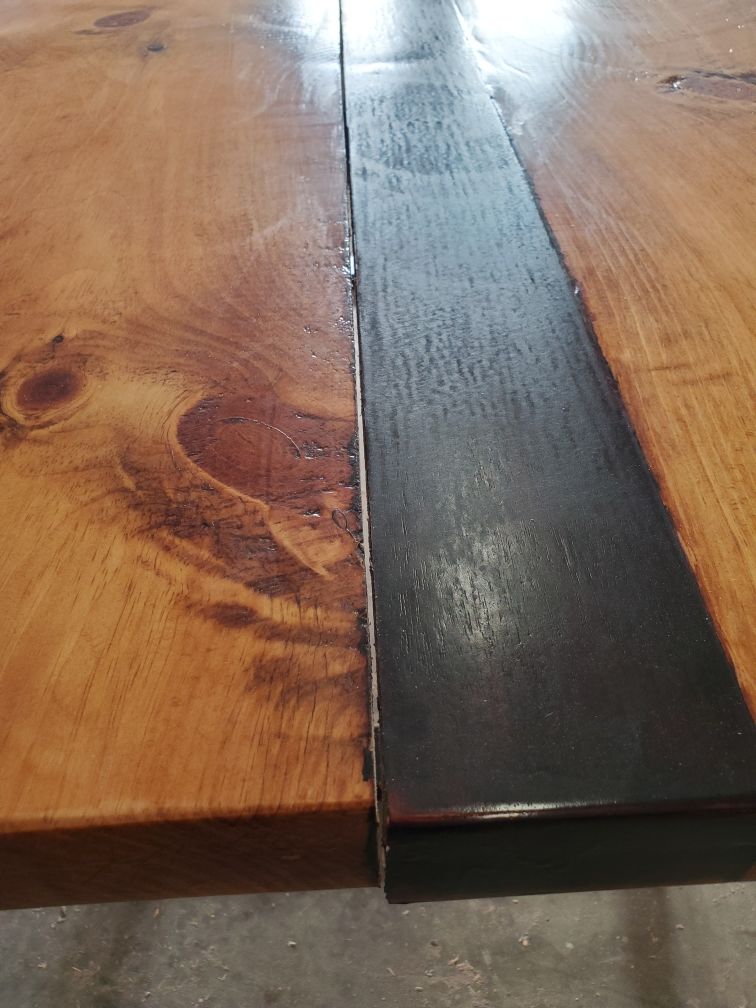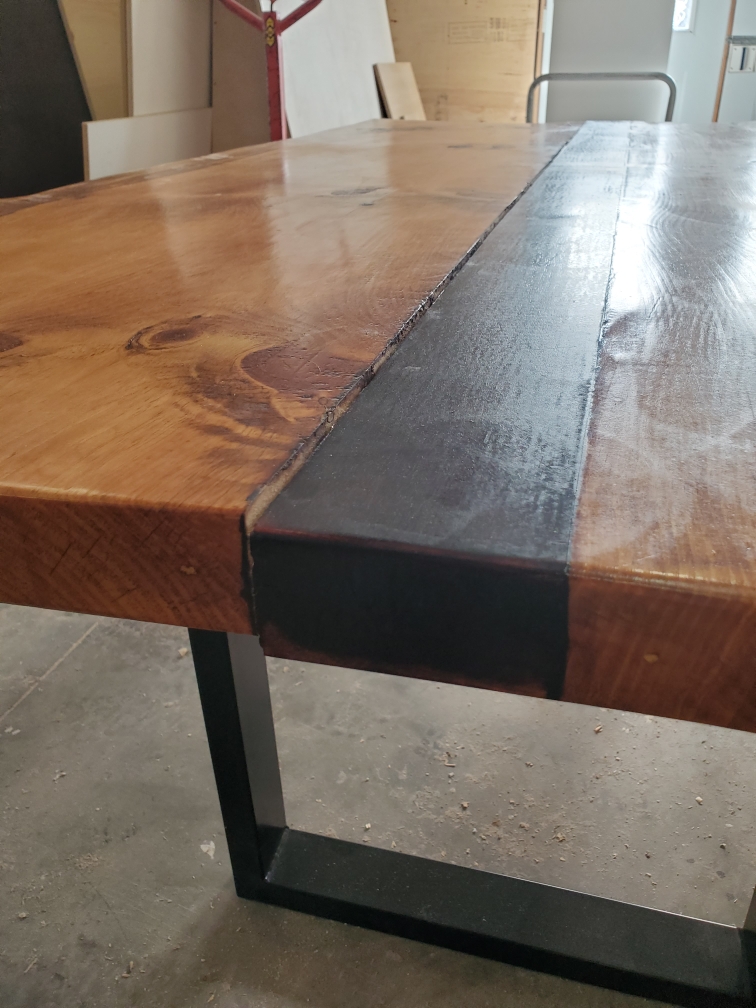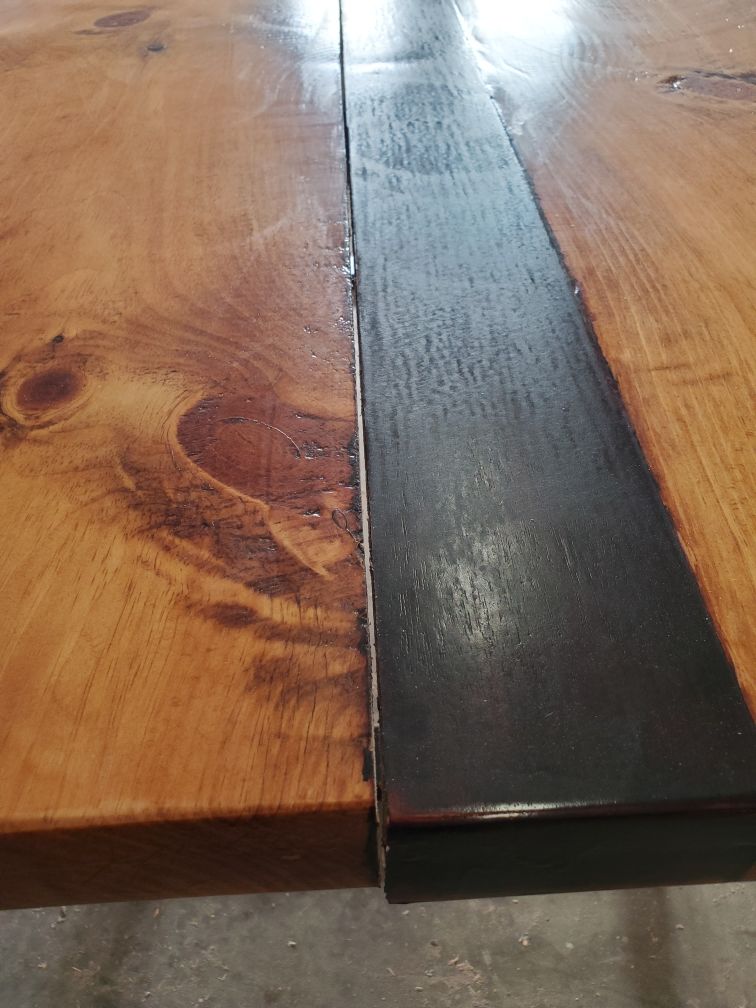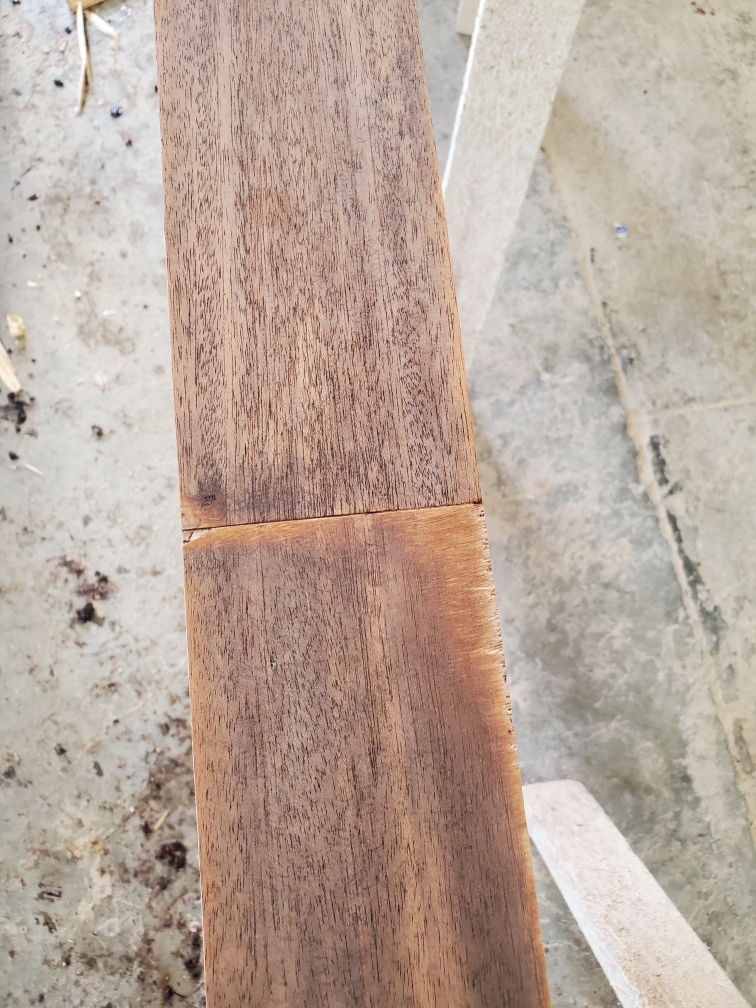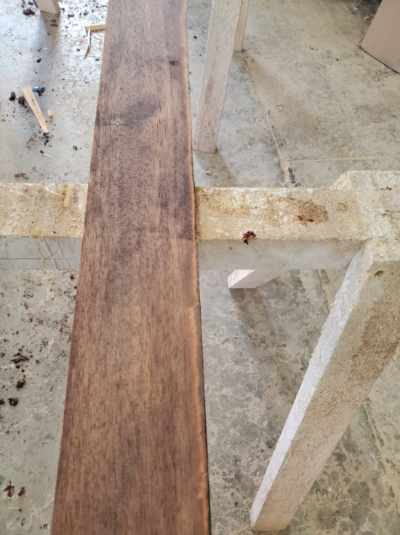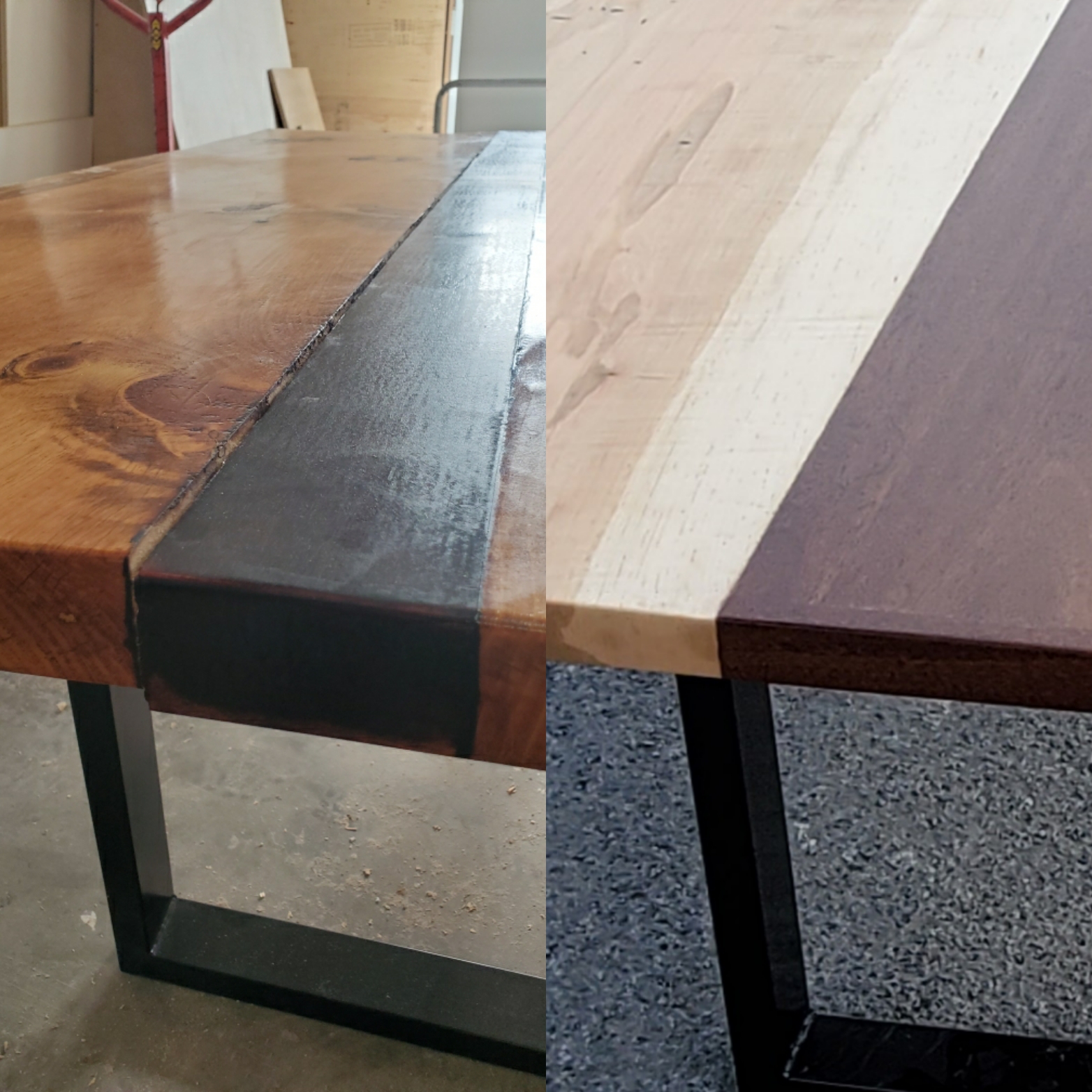
Making it right
As you all know by now, Kent takes great pride in creating quality heirloom pieces that will withstand the test of time. With 20 years experience working with wood, and a post-secondary education as a furniture technician, Kent truly understands the products he works with and the best techniques to create pieces that will last. So, when a customer recently called us to take a look at a table that they had made by another person, needless to say, we were shocked and angered by what we found.
Our client had found this individual through an ad on Facebook. Their vision was to take a table that belonged to a beloved family member, and fuse it with live edge wood to create a very special heirloom piece. What they were given did not honour the existing piece or meet the standard that should be expected of a professional woodworker. From far away, and to an untrained eye, this table does not look all that bad, but when you get a closer look, you can really tell that the person who crafted it was inexperienced and/or did not care about the quality of the work they were producing.

The first thing that we noticed about this table is that one of the pieces of pine were shorter than the mahogany. The wood is also cupped, which means that both pieces of pine have a bend in the wood that makes them look like a “U” shape – not good for a tabletop! The moisture content of the wood at the time the table was made is likely to blame for both of these issues. It is possible that the wood twisted as soon as it was cut to size!
Our client had a woodstove in the same room as this table, which would make the air very dry. If the wood had not been properly dried out, this would definitely account for some of the twisting and shrinking of the wood. This is why Kent ensures that the wood he uses has been both air and kiln dried, before he creates a piece.
Though Kent works with most domestic hardwoods, he prefers not to work with pine because it is a softer wood with a lot more movement. Because it is attached to a much harder piece of wood, it does not make for a good combination for this table.
The next upsetting thing that we can see with this table, is that the mahogany centre is splitting away from the piece of pine. This has occurred, in part, due to the movement of the pine described above, but mostly due to poor joinery. When we disassembled this top, we found that the individual who created it, simply used glue to hold the pieces together. Glue is a start, but wood has life…especially a piece of pine with some moisture! When you join multiple pieces of wood together, the grains within each piece create a tension – a natural “pull” in the wood. So if each piece has a “pull” in a different direction, there has to be something to create a sturdy joint that will keep the pieces from pulling away from each other. glue is only part of the formula! A seasoned woodworker would know that a joint of this size needs some extra support! Even worse, the wood was not properly dressed (sanded) before the glue was applied, which makes the glue far less effective.
Looking at the photo above, you can also see a white line running along the joint. This is wood filler! We believe that the pieces were already pulling away before the builder delivered the table, so they used a poorly matching wood filler to try to fill in the gap. It didn’t work because the joint wasn’t properly secured and the wood wasn’t yet dry! Each problem contributed to another, with this doomed project..
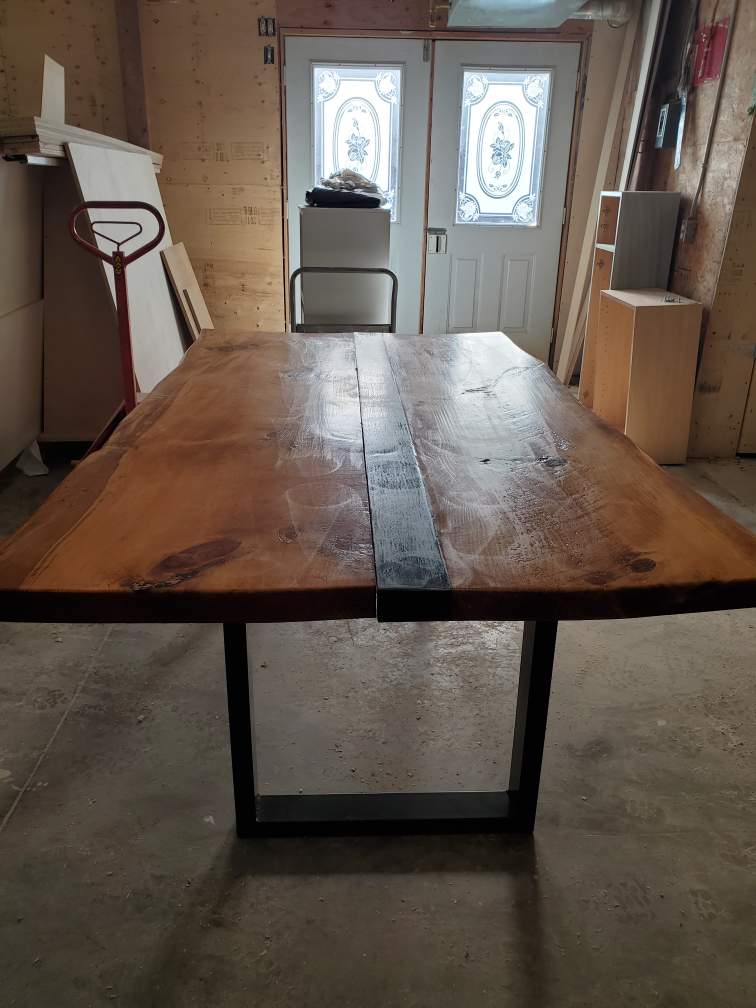
Although the table was obviously poorly constructed, one of the most upsetting parts for us (and probably our client) was the poor quality of finish on the table. In the photo above, the light does a good job of exposing some very poor finishing techniques. For starters, there are saw marks on the wood. Although in some cases, the current trend of “rustic” furniture includes saw marks to make the piece look more weathered, given the rest of the piece, we believe this was less for aesthetic value and more because of poor workmanship. You can also see some round “patches” throughout the top – these are actually marks from a rotary sander! These marks are caused by a combination of improper techniques and low quality tools. Though the top was definitely sanded, it was not sanded enough! There were many naturally occurring holes and bumps on the knotty top. The wood has a brushed on polyurethane top coat that has a yellowish hue. Pine has a natural yellow hue when finished, and this combination darkens the wood and takes away from the contrasting mahogany centre.
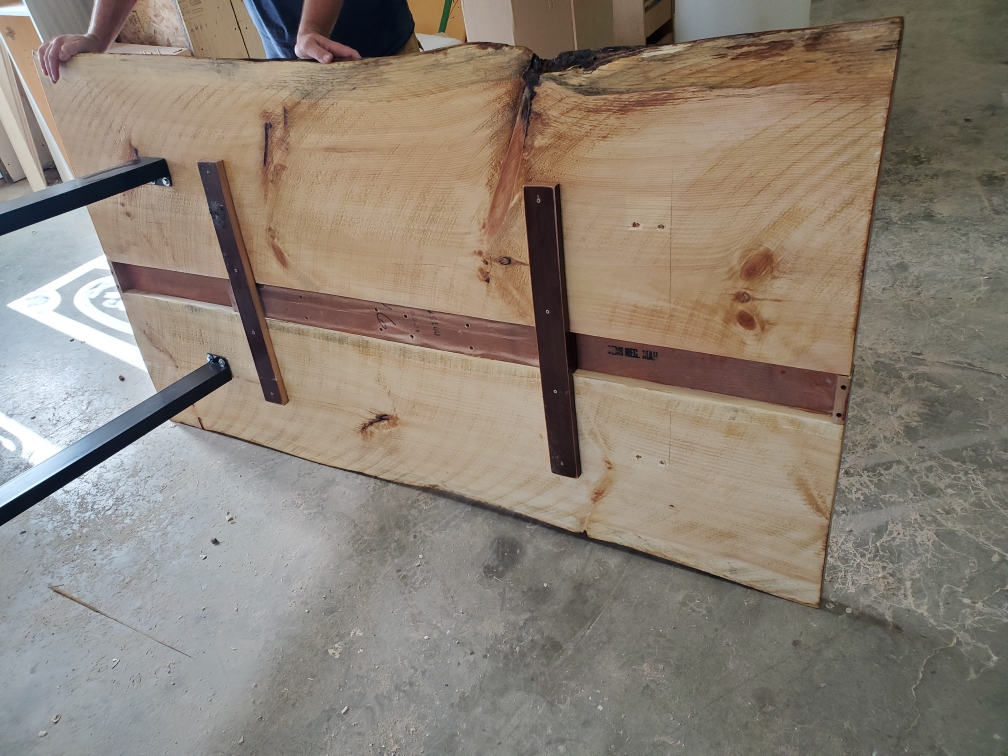
The underside of the table was left “raw” which means that it was not sanded at all, nor was any finish applied. Not only is this uncomfortable to the touch and the eyes, but it also affects the integrity of the piece and can contribute to the warping that we saw in this table. At minimum, the wood should have been sanded and a sealing coat of finish applied. You can also see that the bark and the rot beneath it was left along the edge that appears at the top of this photo. Leaving rot in the wood is never a good look and it will eventually split and peel away in our climate- especially with the poor finish applied over it! In fact, we pulled most of the bark right off by hand.
The photo above also shows a lack of support for the heavy table top. The legs will hold up the end that they are fastened to, but the centre of the table has no support at all. The strapping you see is a poor attempt by the maker to add support to the piece, but it is neither properly secured, nor strong enough, and thus completely ineffective. It does not touch the mahogany at all, because they also failed to “build up” below the strip of mahogany to make it the same thickness as the pieces of pine to which it is attached. The lack of support would also contribute to the warping and the separating that happened with this table. One problem after another.
Let’s talk about that mahogany. The strip through the centre of this table is a piece of a mahogany table that belonged to a beloved family member of our client. The table was given to the builder in tact and it was requested that the wood be incorporated into this table and another piece. From our assessment, the builder used a single leaf from the table in this tabletop. From the second that we saw this table, we could not understand why this dark finish was brushed on so heavily over the beautiful grain of the mahogany veneer. Once we took a closer look we saw that this was a lacquer, not a stain which would definitely have a much different appearance on the wood. When we stripped the lacquer off using an industrial stripper, we found that the mahogany veneer had been destroyed and the screws from below had come right through the top…this was a cover-up job!
So how did the veneer get messed up? Well, it appears that this amateur woodworker used a sander to sand the finish off the mahogany and sanded the veneer right down to nothing, as you can see from the photos above. When he saw what he had done, his solution was to slather a dark colour in thick layers over it so the client wouldn’t notice. What a mess! What scares us most about this person is that they are out there advertising that they can do this kind of work. Not only is it deceitful and unfair to their prospective clients, it makes it harder for those of us that have trained and worked hard to succeed in this industry…but that is a post for another day.
All in all, everything about this table was a disaster. While we were initially asked to fix the tabletop for our client, this was beyond repair and instead, we offered to make them an entirely new tabletop…one that would do their heirloom table justice. Here is what we came up with:
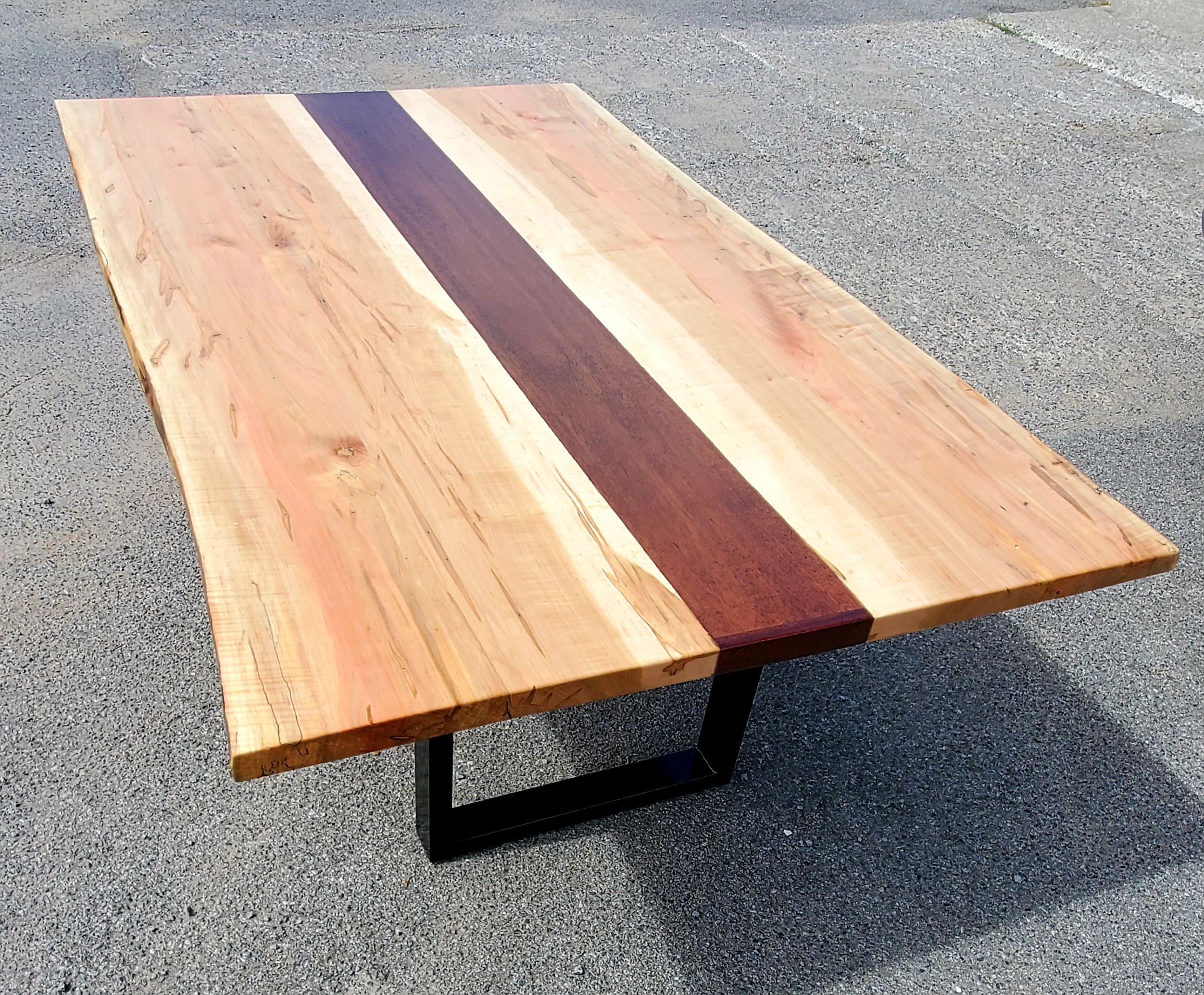
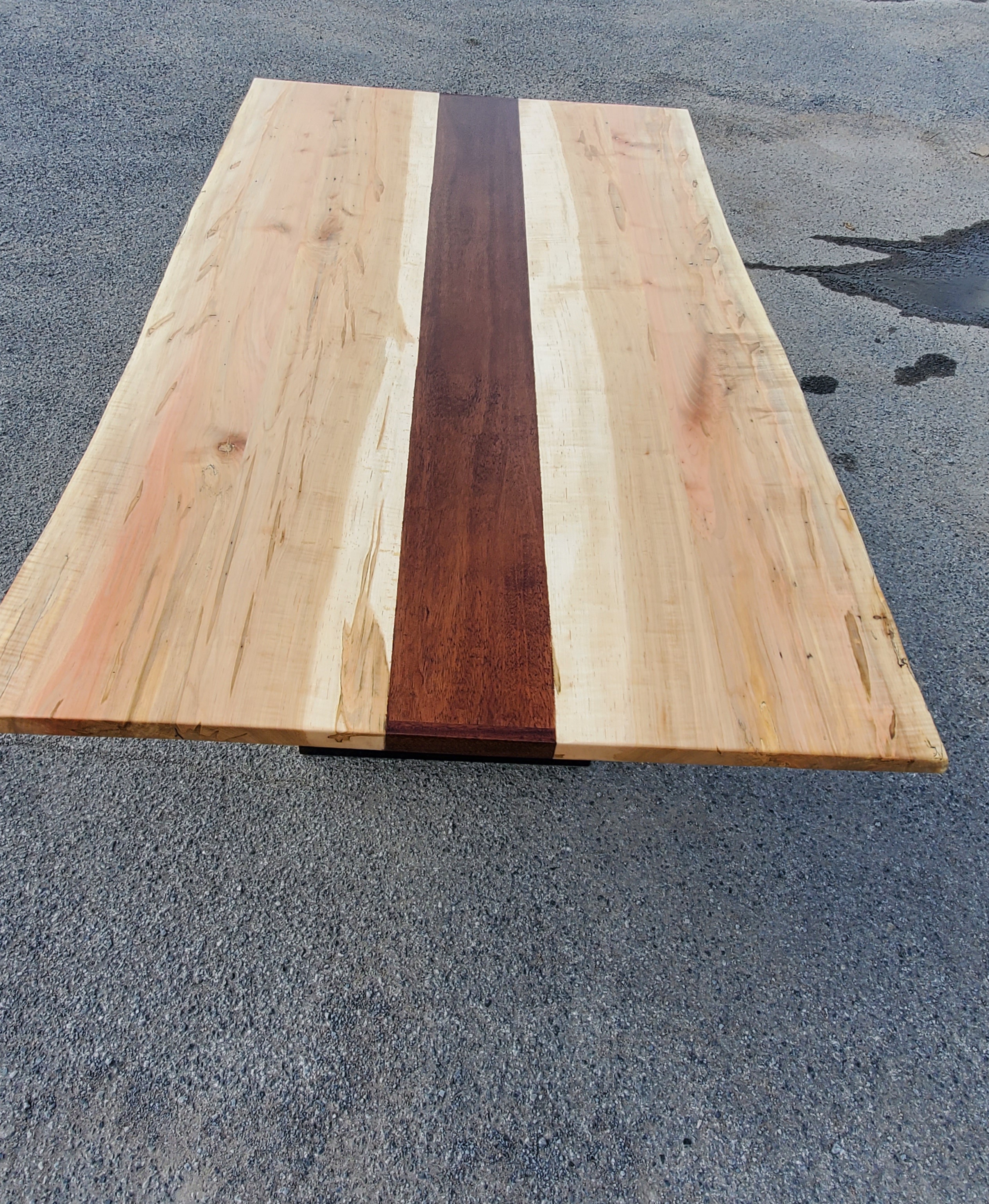
First off, we used ambrosia maple that had been air dried and kiln dried. We feel this is a much better match in strength to the centre piece that we had to work with. It also has some great colour variations that are a beautiful contrast to the colour and grain of the mahogany.
Because we had to put a new mahogany veneer over the existing table piece, we expanded the centre contrasting piece and built it up to the same thickness as the maple, and then veneered the two pieces together to create our wider centre. The maple and mahogany pieces are joined together using biscuits, glue, and screws, to ensure the joint holds up.
The wood was planed so all the pieces are the same thickness, and the top is flat. Kent also sands all of his pieces in multiple stages – it is quite a process! He graduates to finer and finer grain sanding discs so that the table is silky smooth to the touch, before he applies a finish to it. It makes for a flawless finish!
We applied a beautiful red-brown stain to the mahogany that allows the grain to come through, and the table was then given a satin spray finish – top and bottom!
Kent welded extra plates to the legs and repainted them. The legs were then secured in place with custom threaded bolts that are meant for holding these large pieces together. The plates will add additional support and keep the wood from moving too much.
We are so very glad that we could make this right for our client and honoured that they entrusted this job to us after being burned by another. We are confident that this table will host many family dinners and be the site of memories made for years to come.
This does serve as a cautionary tale, though. We so often hear/see people saying “anyone can do that” or “I can do it myself cheaper”. The reality is that anyone can pick up a saw and some screws and slap something together, but “anyone” doesn’t always have access to the right tools or the knowledge that a trained professional does. That’s why we feel that it is so important to do your research and make sure that the person doing any job for you has the experience and knowledge necessary to do the job. Unfortunately for our client, they had a bad experience the first time around, but they came to us after asking for recommendations, visiting our website, checking out our portfolio and having a conversation with Kent. Lesson learned! Take a look at the side-by-side comparisons
We are always more than happy to answer questions, drop by and take a look at something, provide a free quote or set up a design appointment. So reach out any time and if something doesn’t feel right, don’t do it!
